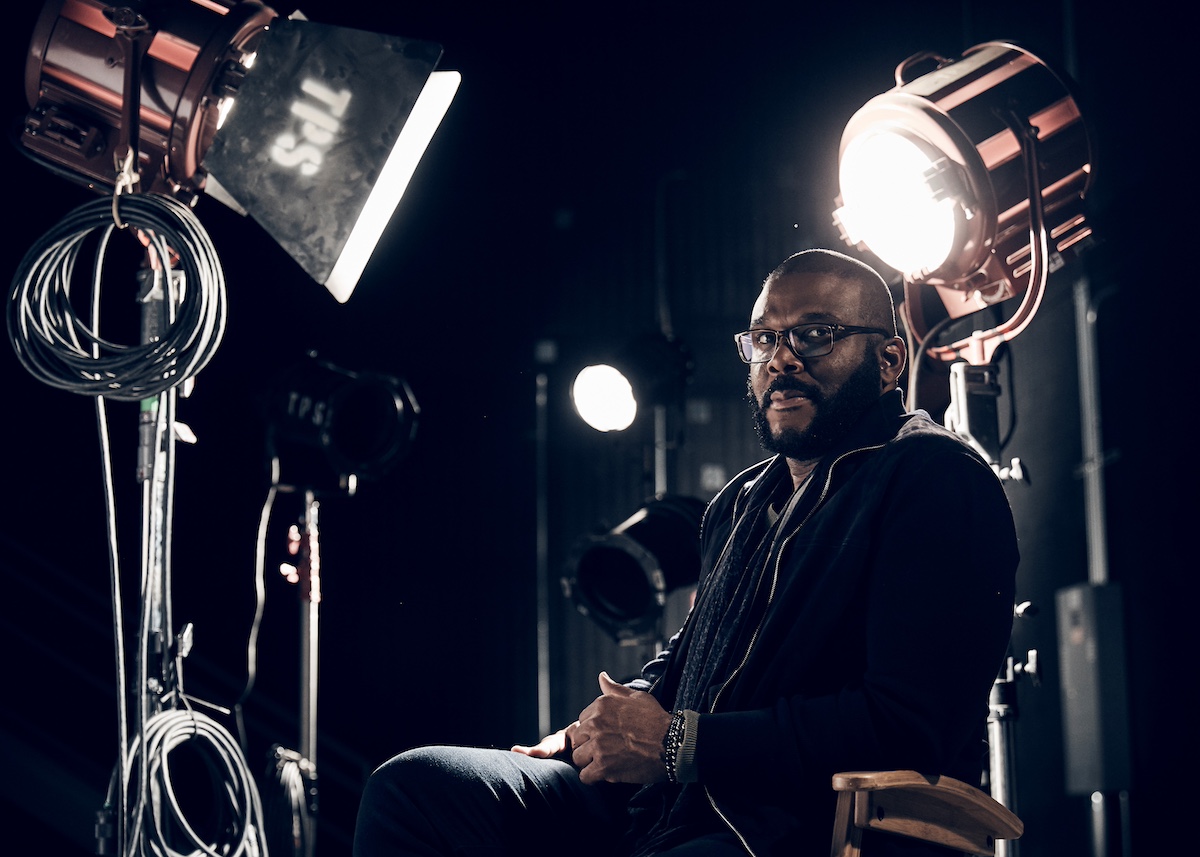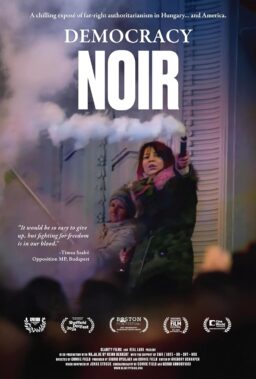Roger Ebert famously received more emails in response to any review he had written—more than “Fahrenheit 9/11” and “The Passion of the Christ” combined—when he awarded one star to “Diary of a Mad Black Woman,” the first screen adaptation of the wildly popular work penned by playwright-turned-industry mogul Tyler Perry. The critic couldn’t accept the film’s serious story of a woman grappling with the aftermath of an abusive marriage being fused with the larger-than-life hijinks of scene-stealing grandma Madea (played by Perry in drag). Yet it didn’t take long for Ebert to realize that Perry’s work was critic-proof, and over the last two decades, his films and television shows have continued to attract loyal audiences.
“Maxine’s Baby: The Tyler Perry Story” is an eye-opening documentary helmed by Gelila Bekele, who has a son with Perry, and Armani Ortiz, who has worn numerous hats at Tyler Perry Studios in Atlanta, which is the largest film studio in the United States. Their film chronicles the origins of Perry’s work, which spawned from the love he had for his mother, Maxine, and the abuse they both endured from his father. The day prior to the film’s premiere on Prime Video, I had the chance to speak with Bekele and Ortiz in Chicago about the ever-evolving views regarding Perry’s remarkable legacy.
Five years after his much-criticized negative review of “Diary of a Mad Black Woman,” Roger Ebert wrote a more favorable review of Tyler Perry’s 2010 film, “For Colored Girls,” in which he wrote, “Seeing these actresses together is a poignant reminder of their gifts, and of the absence of interesting roles for actresses in general and African-American ones in particular. A generation has been often shut out of fruitful roles.”
Gelila Bekele (GK): Oh wow. I think that has been at the forefront of Tyler’s mind. He constantly sees the unseen and the forgotten. In this case, I remember being on the set of “For Colored Girls” and seeing this plethora of young ladies mixed with legends in this one film. We have in our film Ms. Whoopi Goldberg who says, “I won an Oscar, yes, but there were no roles after that.” That is insane because an Oscar is thought to be the pinnacle, so how does one fathom what happens afterwards as an African-American artist? Tyler does think about that, and for him, being an artist is not his only title. He also feels he has a responsibility to involve others in his projects.
Armani Ortiz (AO): Yeah, he’s using his platform to open the door for the next generation. Gelila always says it best: he roots for the underdogs. We’re underdogs. He could’ve gotten anyone to do this documentary, and for whatever reason, he entrusted it to us because of how we saw something that maybe everyone else didn’t see. To have someone like that with that type of platform constantly believing in us when he doesn’t have to, that is inspiring and very unique.
Right after watching your film, I looked at the play version of “Diary of a Mad Black Woman” on BET and was struck by the catharsis that I sensed in the audience’s laughter when Madea was onstage.
AO: One thousand percent! I don’t think that you would really understand Tyler Perry and his work until you see it live in a play. I don’t know if he’s ever going to do another play—hopefully he will—but we were traveling with him for two plays over four years and around six hundred shows. What that character means to people, especially when you hit Shreveport and all these little towns that people kind of forget about, it is something to behold because that character in those plays that he creates speaks to them in a way that many other forms of art really do not. And when you see that, it’s the same type of community when you watch any of his shows or movies. It needs to be in conversation with the community in order to hit the perfect punch, and he really knows how to tap into it.
GB: That’s what we wrestled with while making this film is trying to understand the origin of this artist, where his characters stem from and why he was heavily criticized by his own community. I think we enjoyed having that space for polarity with the critics lending their voices and perspectives, which actually brought us closer to understanding his fans. We could then understand and really see why his work resonates so deeply with them. I look at any great artist like Fellini and the way that he portrayed Italian women or Spike Lee and his upbringing in Brooklyn. We all sort of draw from our own environment and that influences our art. Art is so personal in how it reflects the ways in which we see ourselves.
To have that conversation is important because when I first met Tyler, I didn’t know anything about his work until I met his fans, until I saw where he really came from. Then I realized that Madea exists in my community too. His persona and his work in general can speak to different people on a global level who come from similar backgrounds. I also think there is a huge gap between them and people who come from academia and look down on what he makes because they don’t consider it to be art. I don’t understand why people think that Tyler’s work is bringing our culture backwards. If someone is really drawing from where they come from, who am I to say that it’s not good enough?

Another filmmaker who puzzled Roger was David Lynch, who also mixed serious subject matter with disarming humor. In his response to the critics of his “Diary of a Mad Black Woman” review, Roger thoughtfully likened Tyler’s mixing of genres to Bollywood.
GB: I really enjoyed having that part about Roger in the film because he wrote a response saying that he wasn’t going to take back what he said, but he could see why people felt differently.
AO: Roger was a legend. I just saw a video essay about David Lynch movies that was insane! [laughs] But the beautiful thing is that if David can have the space to make whatever he wants, then so should people of color like Tyler.
How important would you say it is for Tyler to have established his studio outside of the Hollywood system as George Lucas has?
GB: I think it really goes back to ethics and love and really understanding what you do. I’m not saying that this is something everyone should feel responsible to do, but when you are looking at Tyler’s work, even having that studio in Atlanta provides so many employment opportunities for underserved communities. There are all of these people who had previously never been on a film set who can now see themselves working in the industry, and they are not only in front of the camera. They are everything from gaffers to production assistants. Elementary schools come in to tour the studio, and they see how the person who owns it looks like them. We knew that we had to take ourselves out of this film while we were making it. I come from Ethiopia and grew up seeing people who look like me in all forms of media. Our billboards had people on them who were Ethiopian. That was my example.
When I look at the U.S., that is not at all its history. Visual representation and the visual metaphors that are left for us to imagine and dream about are important. I think that’s what we really wanted to focus on. It wasn’t just about Tyler the mogul and all of the stuff that is already widely known about him. We wanted to show was it takes to get there, the gray area of someone who comes from nothing—who actually comes from trauma—and makes something of themselves while leaving space for others to dream and thrive. That gray area of working it out is what interests us. We have that beautiful moment where Armani is interviewing Tyler by the door. You would never think that someone of his stature would be nervous or need time to process things. That’s important. We are so used to celebrating the public image of stars, but what happens behind closed doors matters.
AO: We don’t know a lot of our favorite artists until they get to this place where the studio gives them an opportunity like “Alien 3” was to David Fincher, and then they acquire a following. Tyler came into this critics’ space with his fandom already built because he did all these tours for years and years. So when he finally got the opportunity, and this goes back to his integrity, he wasn’t going to change it up. He knew what worked for his community that was going to support him, so he didn’t care what anybody said about him. He didn’t care if other people understood him because he was speaking directly to the people who he knew understood his art. It’s incredible, and every artist should be so lucky to have something like that.

Your film illuminates how funding for arts programs in schools was ironically cut by actor-turned-President Ronald Reagan, which led church plays to inform both Tyler’s artistry and his understanding of community.
AO: He’s never left the community, and I think that’s the most important part of it all. As he continues to grow, he says, “Okay, let me keep my feet on the ground, let me hear what these people need and want from my art,” and on the opposite side, “Alright, I have all this success. Let me keep my feet on the ground and give these opportunities to people who may never have had the opportunity.” I think that’s very important, everything from his development of who he is and also the mogul and successful businessman that he is continuing to be.
GB: Staying connected is important. When he was on tour, we were able to see how he goes from city to city and his audience is able to touch him in real life. What a brilliant way as an artist to test out your work. Comedians go out to test material before it ends up onscreen. They are able to understand what jokes land and what doesn’t. Film is the only thing that is a similar experience to music because it has rhythm and emotion, and when you take it on the road, you’re able to test it out in the same way that a musician would perform, connect and see what resonates. It fuels him or her to go back and recreate. That is the way to sort of energetically exchange love.
In the film, you include an excerpt of Spike Lee’s early criticisms of Tyler’s work, and then show him years later at the dedication of a soundstage in his name at Tyler Perry Studios.
GB: I think Tyler has a lot to do with that. He’s always like, ‘Even though you said this, I’m going to continue to do what I’m doing without retaliating.’ Those who live in New York are able to understand Spike’s work on a deeper level, just as those who come from Louisiana or the South are able to connect with and understand Tyler’s work. Also, we all grow. There are some things that I may have not agreed with ten years ago that I am able to now see and understand by opening up my optics. So I think that has to do with it as well, but it is primarily Tyler’s personality. He is a six-foot man who has heard a lot of things in his life and has endured a lot, so he knows where to keep his focus.
AO: That’s honestly one of my favorite parts of the documentary. You see how their relationship hasn’t been thrown away. Especially in the Black community, we like to pit ourselves against one another and say, “One has to win and one has to lose.” But for TP to give him the soundstage and honor him in that way—because Spike is a legend and an icon in his own right—and then for Spike to tip his hat was wonderful. Spike and I are both from New York, and tipping the hat is “the Jeter.” It’s his way of saying, “I see you and thank you for everything.” We could have a whole other interview about that grand opening of the studio, but to have that reconciliation happen in front of the entire community was amazing.












